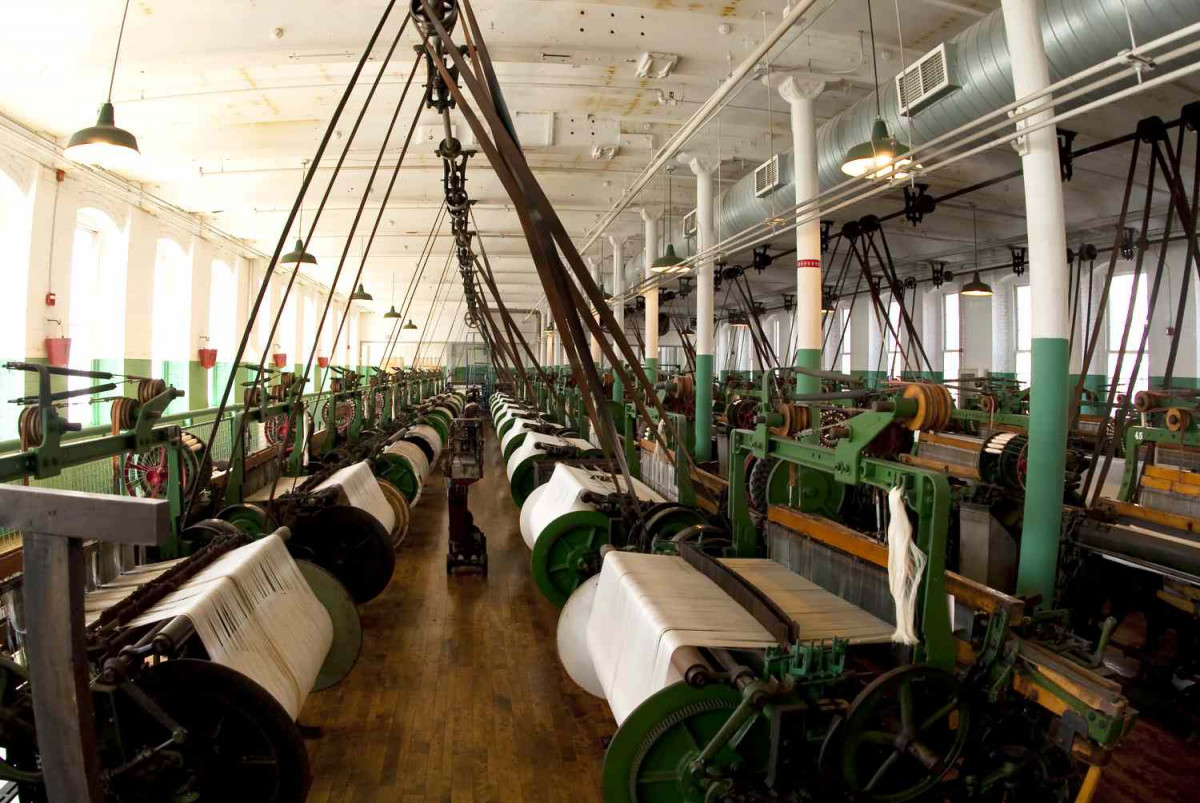(Photo Courtesy of ThoughCo)
“An interior look inside the historic Lowell Mills.”
Riley Fontana
Connector Editor
Lowell was built around the textile industry, and with it came dozens of mills. These mills have since been preserved and rehabilitated into things to serve the modern community such as shops, apartments, and museums. As of 2019, 97% of the mills still standing in Lowell have been reused and rehabilitated.
“And then there were a lot of people who felt that Lowell’s heritage was, you know, it was a Milltown, clearly the textiles had gone, but there was some potential for retaining some of that historic character,”. Said Peter Aucella, the retired assistant superintendent at Lowell National Historical Park.
The Lowell mills were preserved as a way to keep the culture and history of the city alive, along with the sustainability of the environment. Repurposing the old buildings was better for the environment than tearing them down to completely start over. While some mills were completely torn down during the urban renewal of the 1960s and 70s.
“A lot was lost before a decision was made to save the rest,”. Said Aucella, while displaying pictures of Lowell from 60 years ago. “An awful lot of things have gone away and a lot was damaged,”.
UMass Lowell students think keeping and repurposing the old mill buildings is the right thing to do. The repurposing of the mills helps to keep history alive while breathing new life into the old building.
“I went into Mill Number Five and as soon as I went into that mall district, I was like, man, this is awesome. You know?” Said Alex Schickler, a Junior English major. “By itself as just this like giant, daunting building. Like it’s, that’s pretty scary. But like, then you go inside and it’s like, Oh, this isn’t too different from the things I’m used to. So yeah, you get a nice balance”
Travis Paradise, a Junior English major, had concerns about the safety of these buildings as they are updated. “I’m still skeptical on mills being apartments because of the way that they’re constructed though, unless they’d be like reconstructed to allow different exit points, typically on those workers, there’s one way in,”.
The mills that have been renovated for daily life are being updated to be up to code and safe for modern life. There has also been work put in to make the areas clean and safe for those in the area.
“The Lawrence Mills, the one across from the ballpark, that one had $9 million in environmental cleanup of the land, just to where the park is,” Aucella said, about the now apartments located right off of east campus. “That it had so much contamination. So in the course of a lot of this stuff, uh, a lot of environmental improvements got done,”.
Lowell’s long history of mills and the textile industry is why the city still stands today. The preservation and rehabilitation of these mills have allowed the past of Lowell to shine through and allow the modern city to enjoy the space they have to offer.
“I’m more optimistic about the mills because they have, they’ve stayed well occupied. They’ve been well maintained. The future for the mills that have been redone is very strong, and I think we will see eventually the remaining mills get done.”




